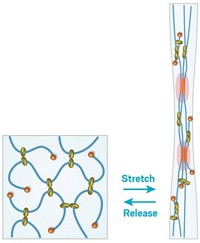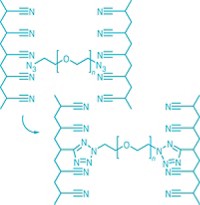Advertisement
Grab your lab coat. Let's get started
Welcome!
Welcome!
Create an account below to get 6 C&EN articles per month, receive newsletters and more - all free.
It seems this is your first time logging in online. Please enter the following information to continue.
As an ACS member you automatically get access to this site. All we need is few more details to create your reading experience.
Not you? Sign in with a different account.
Not you? Sign in with a different account.
ERROR 1
ERROR 1
ERROR 2
ERROR 2
ERROR 2
ERROR 2
ERROR 2
Password and Confirm password must match.
If you have an ACS member number, please enter it here so we can link this account to your membership. (optional)
ERROR 2
ACS values your privacy. By submitting your information, you are gaining access to C&EN and subscribing to our weekly newsletter. We use the information you provide to make your reading experience better, and we will never sell your data to third party members.
Materials
Tough New Gel Mimics Part Of A Cell
Down-the-line applications for new polymer include wound dressings
by Carmen Drahl
January 28, 2013
| A version of this story appeared in
Volume 91, Issue 4
Cells resist damage from everyday strain thanks in part to the materials in their cytoskeletons. These biopolymers stiffen when they are pulled. That quality is desirable for tissue engineering applications but has proved challenging to reproduce in a synthetic material. Now, chemists have come up with a polymer that responds to force much like the cytoskeleton’s biological scaffolding (Nature, DOI: 10.1038/nature11839). Alan E. Rowan and Paul H. J. Kouwer of Radboud University Nijmegen, in the Netherlands, led a team that modified polyisocyanopeptide polymers with triethylene glycol tails to control the materials’ solubility in water. The unusual polymers gelate when warmed—most gels form through cooling. In gel form, Rowan says, the polymer chains bundle together like fibers in a nanoscale rope, increasing the materials’ stiffness. Results from atomic force microscopy and rheology studies show that the polymer doesn’t snap under strain but instead stiffens like intermediate filaments, a component of the cytoskeleton. The team has patented the polyisocyanopeptides and has started a company called NovioTech to commercialize potential applications, including wound dressings.





Join the conversation
Contact the reporter
Submit a Letter to the Editor for publication
Engage with us on Twitter